If you’re a business that’s thinking about investing in a commercial solar power system in Malaysia, then this guide is for you.
If your business can afford to pay its electricity bills, it can afford the cost of commercial solar power.
Unlike homes, which usually use electricity before 9am and after 5pm, most businesses operate during the day and use most of their electricity during the day.
This makes Malaysian commercial businesses a great fit for solar systems.
Our residential solar guide, which only takes about 10 minutes to read, has all the information we think you need to know about getting started with solar in Malaysia for your home, such as which solar panel brands and inverter models to consider.
However, commercial-sized solar systems (10 kW and up) carry some unique design challenges and considerations, which we’ve summarised in the following short guide for businesses.
If you’re feeling pretty confident about solar systems already and you’re just looking to get prices from Top Solar’s pre-vetted installers, then click here to get a commercial solar quote.
Otherwise, here’s what you should know before you get a quote for solar for your business:
- Connecting Commercial Solar Power Systems To The Grid
- The Four Groups of Size for Commercial Solar Systems
- Typical Commercial Solar Costs and Payback
- Commercial Solar Setups, Why Your Commercial Solar May Not Need a Roof
- Financing A Commercial Solar System
- What To Expect From Your Initial Installer Consultation
- The importance of IRR and discount cashflow analysis as part of your quote
- The Difference Between Commercial Solar Panels and Residential Solar Panels.
- Inverters For A Commercial Solar System.
- Batteries – Worth It?
- Next Steps
Connecting Commercial Solar Power Systems To The Grid
When installing commercial solar panel systems in Malaysia. It is very important to seek in writing, approval from SEDA for the system. Every solar power system connected to the grid must be approved.
For larger commercial size systems, most (if not all) approvals are issued with conditions. For example, “This 70 kW system has been approved, subject to the system having an export limiting device set to 10kW”.
Knowing this is extremely important, as it involves a substantial amount of cost and equipment to meet these conditions – and export limiting your system may affect its projected savings.
Some less than reputable commercial solar installers may not disclose this, as they may not have factored it into their costings to begin with.
Their logic is that if they have to revise their quote upwards after factoring in additional network compliance work, they may lose your business – but if they ignore it and continue on, they can hope the system won’t be inspected by the network or its associates.
For this reason – obtain a formal copy of the approval and seek an opinion from an independent consultant, if possible. Investing in a large commercial solar panel array involves significant capital, and you want to avoid any nasty surprises for your business.
Be sure to cover this with the solar company of choice, and also confirm with your local council. Most good commercial solar companies will have an architect and private certifier on hand to expedite the approval process.
The Four Groups of Size for Commercial Solar Systems
To put commercial-sized solar systems into perspective, the most commonly installed residential solar power system size in 2024 is 6.6kW, or around 16 panels
Less than 30 kW (Up to about 100 panels)
These solar panel systems have a similar setup as home solar panel systems. They use the same hardware and fall under the same grid connection rules as residential systems – meaning that installers who perform residential-sized installations can usually handle business-sized installs up to this size without needing any ‘specialist’ commercial solar power knowledge.
A 30 kW system will generate about 100 -130 kWh of electricity a day on average over a year, which will save approximately RM3,000 per month if 100% self-consumed (which is possible in commercial situations).
30-100 kW
Commercial solar setups of this size require special systems to protect the grid from all the electricity they can generate. They may need special permission from TNB to connect to the grid so the approval may come with some conditions. A commercial solar system specialist is recommended for business systems this size and larger.
Commercial solar systems in this size range are typically installed on medium sized office buildings, medium sized warehouses and shoplots.
Over 100 kW
If you go over 100 kW, you are no longer eligible to claim the STC “rebate”. But don’t panic! You still get a subsidy known as ‘LGCs’ (covered in point #5 below in more detail). This is paid every year and is based on how much energy the system actually generates. This adds some complexity and paperwork for your business, as you have to install a special meter and report your generation every year to claim your ‘rebate’.
These are typically installed by hotels, large offices, wineries and small to medium factories.
Over 250kW
These systems are very large, and we recommend a specialist installer who understands the specific engineering requirements of such big commercial systems. They generally go on large shopping centres or on the ground as solar farms. Email us directly if you’d like our recommendation for the best referral.
Typical Commercial Solar Costs and Payback
Good quality commercial solar power – over 30kW and less than 100kW – will, as a ballpark figure, cost around RM3,000 – RM4,300 per kW to be installed in Malaysia . Adding microinverters or power optimisers will add around 15-20% to the total cost, compared to using a string (or central) inverter system.
A good 20-30kW commercial solar system can installed for around about RM2,500 per kW. This is because they need less network protection and associated engineering costs.
Some other examples of costs for a commercial solar installation include:
- installing 500kWp for a warehouse cost approximately RM1.2million, RM2,400 per kWp installed.
- installing 1MWp (1,000kWp) of solar panels on top of a warehouse the total cost of solar panel installation would be around RM2.2 million.
Although this cost may seem large, there are several renewable energy incentives in Malaysia to help businesses with the cost, and contracts such as power purchase agreements (PPA) help companies avoid the upfront costs of buying and installing solar energy systems.
It is important to note that with electricity bills for businesses, the cost of “raw consumption” tends to be low. Most of the electricity usage cost is in other fees and charges, which you need to confirm can be reduced or offset by installing a solar power system.
Do some research yourself to ensure “the pitch” is as good as it seems. You will be surprised!
In Summary:
- As at 2024, good quality commercial solar power in Malaysia costs approximately RM3,000 – RM4,300 per kW installed, or as low as RM2,400 per kW if you install 20-30kW. It’s not uncommon for payback on commercial solar systems to be achieved within 4 – 6 years.
- Confirm what charges on the bill will be reduced when solar panels are installed, and by how much.
Commercial Solar Setups, Why Your Commercial Solar May Not Need a Roof
When it comes to commercial solar installations, ground mount systems are an option if a roof is unsuitable for solar. However, they represent a niche type of solar installation and require a lot more planning and also cost compared to a roof-mounted installation.

Weight is a factor when installing a commercial-sized solar installation on the roof of a business.
It is vitally important that a structural engineering certificate is produced and an engineer has physically inspected the site.
Also be sure that a detailed roof plan is shown to you well before installation.
Flat panel arrays are generally more common compared to tilt-frame installations. Flat panels are cost effective than tilt frames and can be more easily altered to suit last-minute variations.
Financing A Commercial Solar System
There are three (3) main ways commercial solar systems can be financed in Malaysia:
1) Cash/CapEx
Like buying most big-ticket items the cash price for a commercial solar system will always be the best price which also offers the shortest possible payback time for your business).
The fees and charges involved with finance increase the overall cost of a purchase.
A large commercial solar system can be a lot of capital to outlay, and this capital could be better used elsewhere in the business.
2) Power Purchasing Agreement (PPA)
Some solar installers offer a Solar Power Purchasing Agreement (PPA)
PPA’s are a type of solar leasing arrangement.
The idea is that a third party installs a solar system on your property (meaning they legally owns it, and are the ones to maintain it), and enters an agreement with your business to sell you a set amount of electricity over a long term agreement.
As the business owner you get to benefit by lowering your business electricity costs, because the price for electricity under a PPA will be cheaper than what you are currently paying TNB. There is no upfront cost for installing the system.
The downside is that your business will be required to buy all of the electricity generated by the solar system. This is regardless of whether this electricity is self-consumed by your business or sent to the grid.
As self-consumed solar power is far more valuable than solar electricity that is exported to the grid for a feed-in tariff.
If you are considering a PPA, keep in mind that any credits generated as part of NEM one month after it is generated for businesses. Therefore it is very important to have a system installed that matches your own maximum self-consumption.
PPA’s set out the price of solar power for the duration of the PPA. While a low price for year one is a good start, it’s very important to read the agreement on how the prices will be adjusted over time.
The best PPA is one that, over its term, increases its prices at a lower rate (or not at all), rather than the one with the low starting price and then inflates by 6% p.a quickly increasing your costs
3) Bank Finance / Loan
A loan will allow you to negotiate pricing with a commercial solar installer as if you were a cash buyer.
You will need to calculate the cost of the interest on the loan compared to the electricity cost savings. If the savings from your new commercial solar system are more than what you pay on interest for the loan, this would make the loan worthwhile.
The finance option is great to avoid taking a big cash flow hit to your business rather than using cash/capex to buy a solar system.
What To Expect From Your Initial Installer Consultation
A Malaysian commercial solar installer who knows what they are doing will start by conducting an electricity profile analysis on your property.
The main things they will look for are:
- The billing structure – what kind of tariff is your business eligible via NEM?
- Your electricity consumption during peak sunlight hours. This will allow the installer to determine what’s more important – roof space or what you, as the customer, actually need. For example, you may need a 200kW system, but only be able fit 100kW on your roof – an electricity profile analysis will be able to definitively tell you if it’s still worth it to go ahead.
- Arranging of site visit/inspection
- Understanding your business needs and goals
- Analysis of electricity bills and interval data (to be able to accurately project paybacks)
The importance of IRR and discount cashflow analysis as part of your quote
IRR (internal rate of return) is a better metric than ROI because the capital invested in a solar power system is gone after its 20 – 25 year lifetime.
Good commercial solar installers should present a clear cash flow model as part of their quote. Since this is coming from a salesperson, it’s highly recommended to get your accountant or someone to check over the calculations.
It’s very rare for installers to put false numbers into an analysis but the calculations could be manipulated by changing future assumptions on interest rates and future electricity prices. With a few changes to the numbers, this could significantly change the outlook of your investment.
The Difference Between Commercial Solar Panels and Residential Solar Panels.
Most residential roofs are much more restricted and have less usable roof space (compared to say, a roof of a factory or warehouse. That’s why with the limited space, residential sized solar panels are typically ’60 cell’ panels.
Commercial-sized roofs have less restrictions for rooftop space and therefore larger, more powerful 72-cell solar panels can beused. This also results in lower installation costs, as you need fewer panels overall to achieve the same amount of kW.
Inverters For A Commercial Solar System.
There are three options when choosing a solar inverter setup for a commercial solar installation job.
- Microinverters or optimisers
- Chained string inverters
- Large central inverters
Microinverters and optimisers generally are 20% more expensive over conventional string inverters, but offer a variety of safety and performance benefits.
When dealing with solar installations on the commercial scale in Malaysia. You might think why spend an additional RM50,000 expense to your business for microinverters (for example) compared to a string inverter system that will effectively produce almost the same electricity.
String inverters represent a more cost-effective option – but the vast majority of commercial installers, in our experience, tend to lean towards linking residential-sized inverters together instead of using one large central inverter.
This industry preference is for a variety of reasons:
- Few commercial roofs suit a huge single array, and multiple smaller inverters gives design flexibility with different strings.
- Access. It’s much easier to move and install briefcase-sized micro inverters compared to a central string inverter that can be the size of a small room – especially if you need to use heavy machinery to install it.
- Redundancy. The inverter failing won’t crash your whole system
Ultimately, it is up to the solar installer to make their recommendation based on your situation, and for you to decide which would suit you better.
Batteries – Worth It?
At this stage in (currentyear), installing batteries is not very financially viable. Whether installing batteries for your system will depend on the unique needs of your business. Based on the amount of electricity consumption a commercial building will have, battery storage is usually unattractive for commercial installations. Exceptions are:
- Backing up loads for regular blackout protection, unless you get blackouts regularly it’s not really worth it if you’re trying to protect yourself against a blackout that happens once a year.
- The business is paying high demand charges on electricity bills that a battery system will reliably reduce.
Currently the cost of a battery can range from RM70,000 to RM100,000. Unless your business has a critical need for electricity storage and backup power, it’s usually better to save your money than to buy battery storage. But battery storage is falling in price, so this could soon change in the future.
Next Steps
So there you have it, our getting started guide for solar power for your business – with this information and advice, you’re now better equipped on getting a commercial solar quote.
If you’re considering installing solar panels for your business, Top Solar can help you get quotes from high-quality, pre-vetted Malaysian installers quickly and easily:

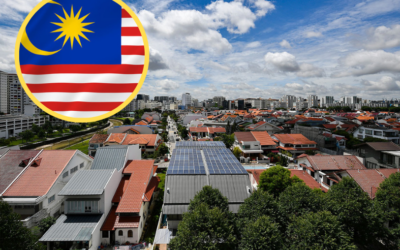
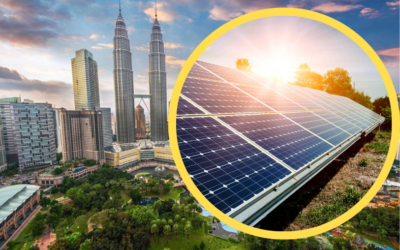
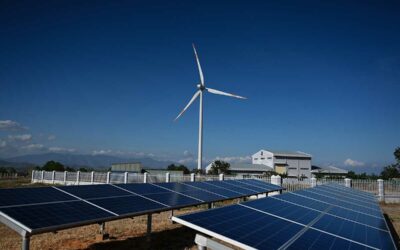
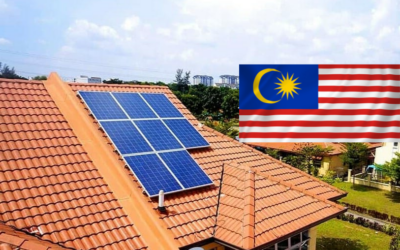
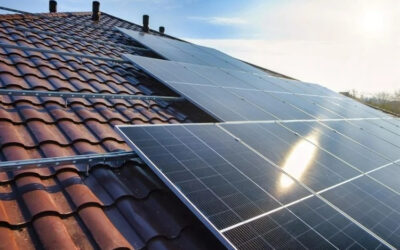

0 Comments